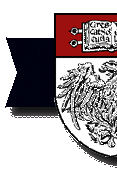|

The
cutting edge
Hermes, insufflate,”
commands Constantine Frantzides, eyes fixed on the liver gingerly
clenched between his forceps. His assistant, Hermes—a state-of-the-art
surgical computer trained to follow a repertoire of voice commands—chirps
in compliance and inflates the patient’s body cavity with carbon
dioxide, allowing Frantzides to repair the hiatal hernia causing
the patient’s heartburn.
Like many
surgeons today, Frantzides, professor of surgery at the U of C and
chair of the division of surgery at its Louis A. Weiss Memorial
Hospital, relies on minimally invasive, or laparoscopic, surgical
techniques to reduce the pain, risks, and extended hospital stays
of conventional surgery. But his integration of technology like
Hermes takes the advantages of laparoscopic surgery a step further.
Building his
career on laparoscopic techniques—eight of which he pioneered—Frantzides
can perform procedures that previously required incisions of up
to 12 inches through just a few quarter-inch slits in a patient’s
abdomen. A camera inserted through one slit allows Frantzides to
watch on a monitor above the patient as he uses special tools inserted
through the others to cut, cauterize, suction, and suture.
The centerpiece
of Frantzides’ futuristic operating room is Hermes. The device
was named for the Greek gods’ messenger by its developer, Computer
Motion, for its role in carrying out a surgeon’s instructions
and alerting staff to the status of the operation.
Before an
operation, Frantzides inserts a computer record of his voice patterns
into Hermes, which descends from the ceiling on its own power-assisted
boom. Other instruments and monitors in the room, dubbed an endosuite,
can also be pulled down from the ceiling for use or left retracted
for storage.
Able to decipher Frantzides’ mild Greek accent, Hermes allows
him to more seamlessly direct surgical procedures, providing audio
feedback when it completes a task. Hermes can perform a number of
actions that would otherwise require the surgeon to turn away from
or lean across the patient to adjust controls manually.
Speaking into
a headset, Frantzides can ask Hermes to inflate the body cavity,
increase or decrease the intensity of light illuminating the cavity,
or take a snapshot of the area under investigation, all while his
eyes are fixed on the monitor above.
Frantzides
plans one day to use a slim-profile monitor mounted on his office
wall to coach a surgeon across the country through an operation.
He also envisions an operating room where the surgeon uses motion-
and pressure-sensitive gloves to manipulate sterile robotic extensions
that perform surgical procedures on the patient. Though a strong
advocate of advanced technology in the operating room, Frantzides
still believes that technology will never render the surgeon obsolete.
“There’s always a boundary,” he says. “The surgeon
will always control the operation.”—M.D.B.
|



